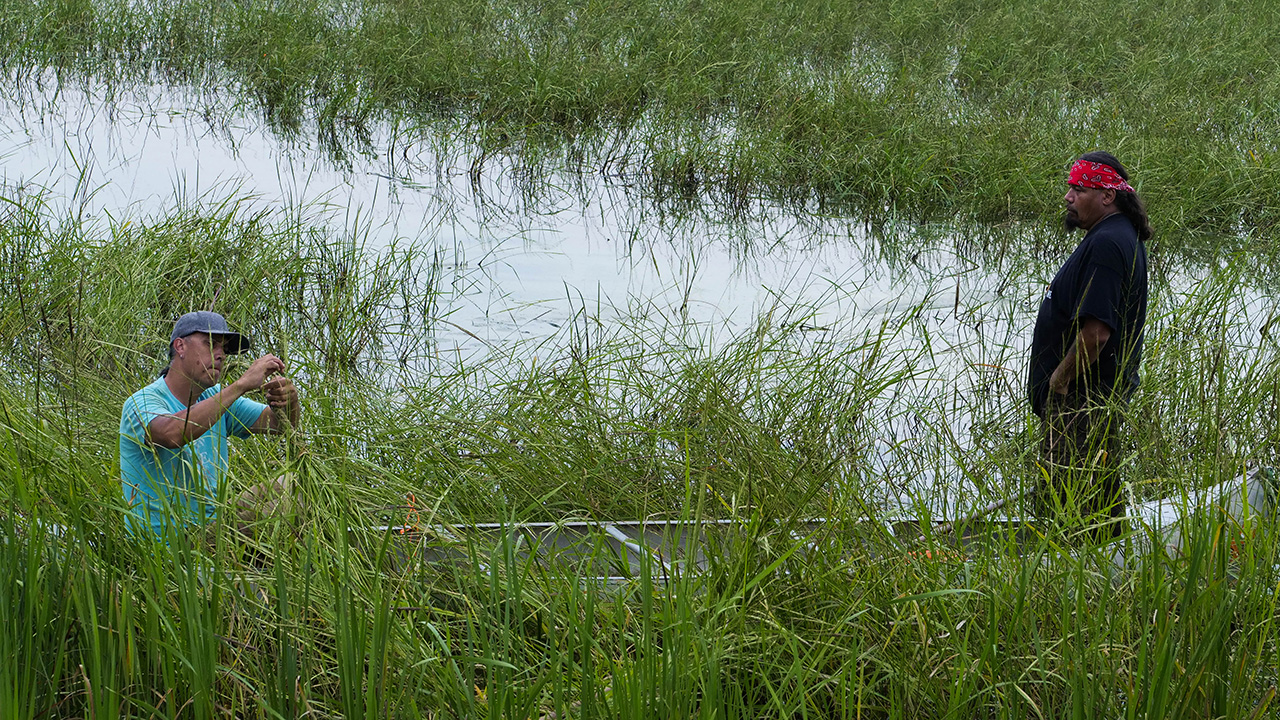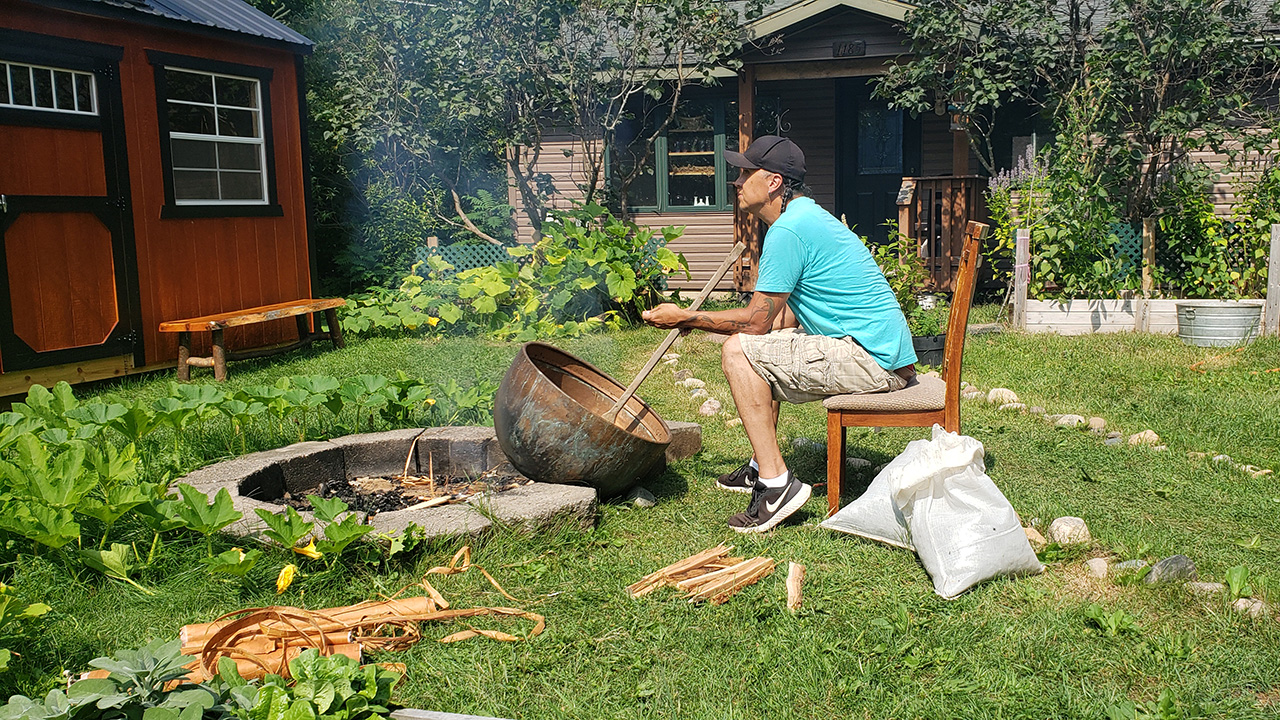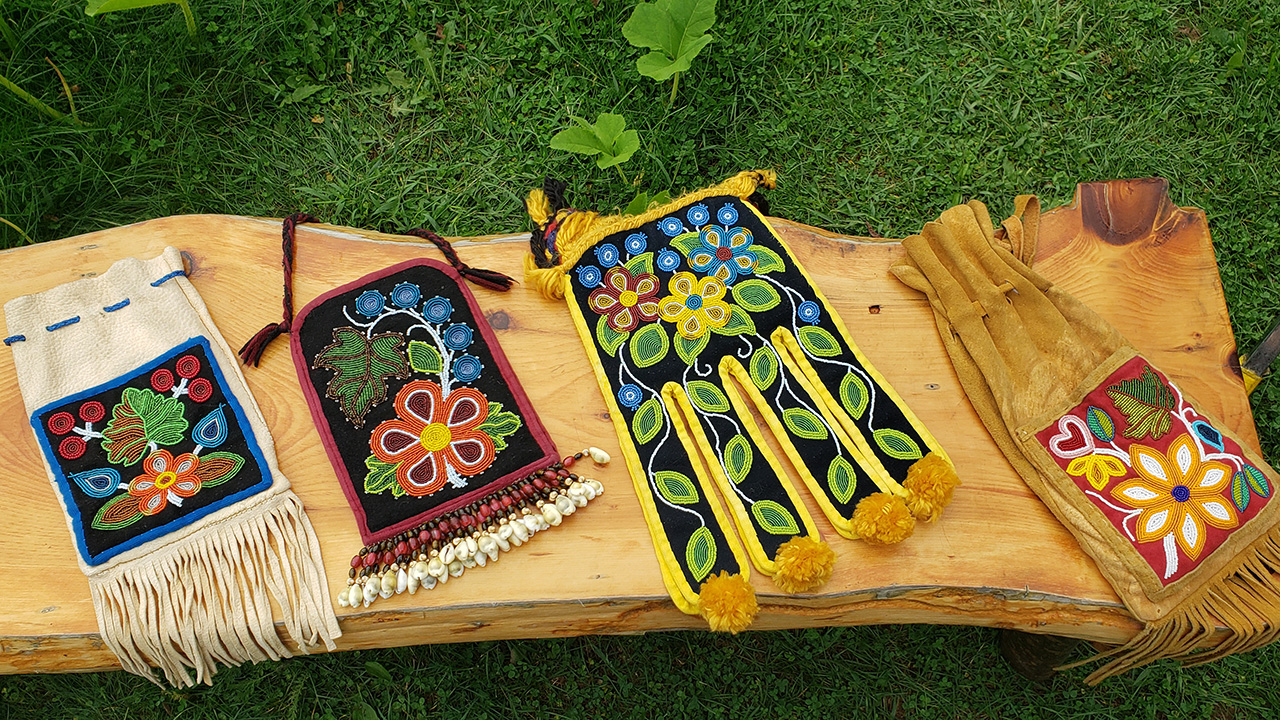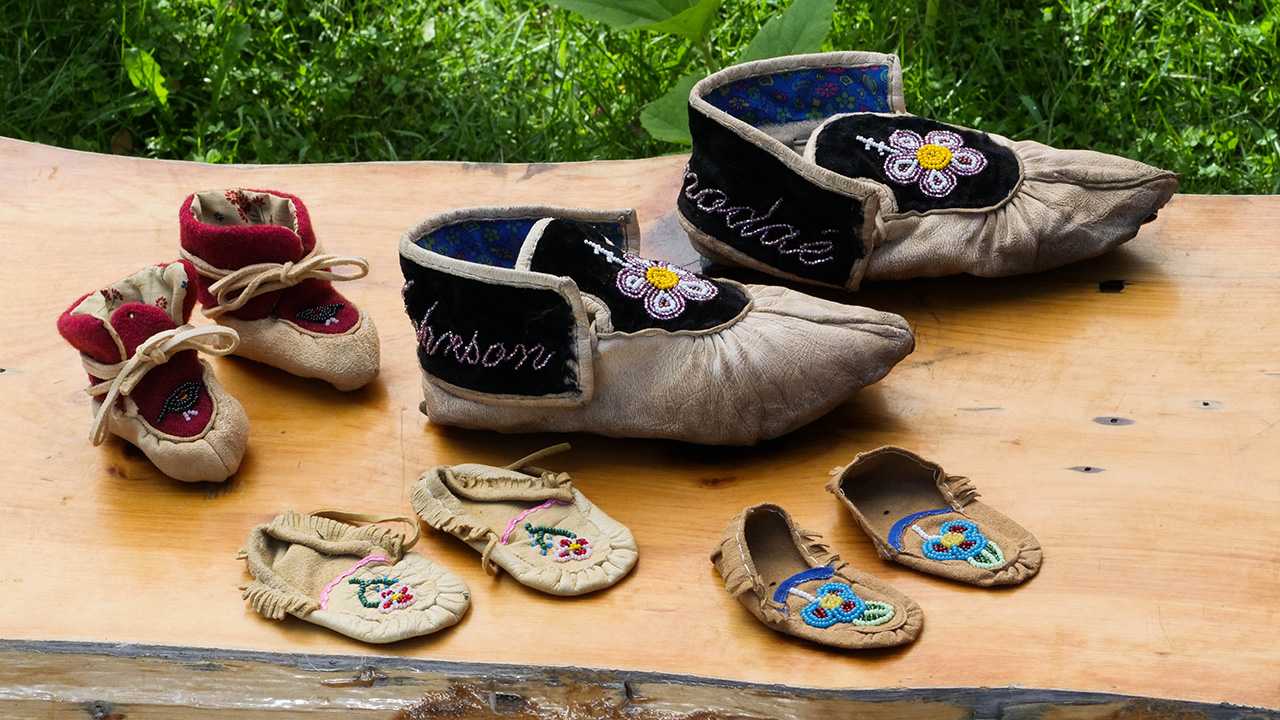
- Donate
- Watch
-
-
-
Explore Online
-
-
PBS
 Passport
PassportSupport PBS Wisconsin and gain extended access to many of your favorite PBS shows & films.
-
- TV Schedule
- News
- Education
- Support Us
-

The idea of home has taken on heightened importance in recent years. Craft in America’s new episode embraces its many meanings – from the physical structure, to the belongings we cherish, to the meals we share with family and friends.
Craft in America is an award-winning documentary series celebrating the beauty and relevance of handmade objects and the artists who create them. Through the artists represented in “Home,” viewers can examine the significance of our surroundings while acknowledging the challenging histories that have shaped our ideas of it.
The exploration of handmade environments and handbuilt homes begins with the Ojibwe wild rice harvest in Lac du Flambeau, Wisconsin, with tribal member and craftsman Biskakone Greg Johnson. Throughout the episode, Johnson – who also narrated the “Hunting Deer” episode from PBS Wisconsin Education’s Native American cultural and language series The Ways – shares his mastery of the crafts and traditions of his people.
Craft in America: Home is now available for on-demand streaming online and on the free PBS Video App. The program will also air 6 p.m. Sunday, Dec. 25 on PBS Wisconsin.
PBS Wisconsin spoke with Johnson about his crafts, culture and what home means to him.
PBS Wisconsin: Although the focus of the episode is home, your segment opens with you in a canoe harvesting wild rice. Whose idea was that?
Biskakone Greg Johnson: They really wanted to focus on art and their topic was home, but I explained to them that home is everywhere. It’s out here where we’re going, which was almost an hour-and-a-half away from my house, and that’s home, too. That’s within the Ceded Territory, and the Ceded Territory is land that was agreed upon between the United States and the Ojibwe tribes when they signed the treaty, and that turf is still our home. That’s where that wild rice bed was; that’s our home. I thought, if you want to see what our home is about, you have to immerse yourself.
We can’t just talk about baskets, we can’t just talk about bead work and all of our artistic skills because those skills are born from the experiences we have on the land and that land is located within our home. They thought it was a really cool idea to showcase a little bit of the wild ricing we do. That’s just as important as the artwork that we do. That’s living the artwork and that’s where you put your skills. Those baskets, that’s where you use them. You use them to store that rice; part of creating that basket is harvesting that rice.
PBS Wisconsin: Why did you decide to share your story?
Johnson: (The Craft in America producers) wanted to take a little glimpse into our life here in Lac du Flambeau, and so we opened our door and we got to share a little bit about what we do and what we know. It was really nice of them to want to share that. When we let people in our lives and we let people in our home, there’s a lot of trust that goes into it because of what’s happened in the past to the Ojibwe people and our ancestors and even up to the spearfishing days. There’s a lot of backlash, there’s a lot of people who don’t like our lifestyle and don’t agree with the way we do things because we hunt a lot and we fish and we trap and we spear fish and that raises a lot of eyebrows in the non-Native community, especially for sports fishermen.
What happens is, when you educate people through these types of videos and you share your side of the story, then people say, “You know what, these guys are not so bad.” Not that their opinion matters but it’s educating the public when these pieces go out. People are going to see that it’s more than just taking fish with the spear. We have a culture behind every breath we take and every motion that we take in the forest. It all means something, and it’s bigger than that one fish.

Biskakone Greg Johnson tying wild rice. Photo by Denise Kang.
PBS Wisconsin: Have you always had an appreciation for your culture or did it come with age?
Johnson: When I was young, my mother made us go to church because that’s what she knew. She was raised in the era where, in order to be a good human being, you had to go to church. Growing up, I really didn’t feel like I fit into that category, but when I turned a certain age, I think I was 12 or 13, I told her that I didn’t really want to follow that way. She was really supportive of it. Most parents would be the opposite, but she was like, “Alright, you can believe whatever you want and you can do whatever you want just as long as you believe in something.” That’s all that I wanted to hear.
I said I wanted to go hang out with these elders, and that’s what I started to do. I visited various elders in the community, and that’s kind of where I learned some of my skills, not necessarily specifics but hearing them talk about it, I would say, “I want to do that.”
Maybe they were talking about hunting or trapping — I want to do that, I want to live like how they did long ago. I had the option, and I got to spend time with credible people who are unfortunately no longer here. I got to hear about beadwork and moccasins and stories and how things are all built up and how it impacted our way of life and how it helped us and aided us and how all those things from nature are gifts.
PBS Wisconsin: Your daughter is part of the episode, and she expresses how she came to appreciate your way of life with age. Did that remind you of you as a youth?
Johnson: When you’re young, you’re raised a certain way, and that’s just what you know. She was my first born, so when she was born, she was gifted a pair of moccasins, she was in a cradleboard and she was raised traditionally. She ate Native food from day one, she had wild rice as her first solid meal and she had maple sugar and she had hominy made from corn, and she had venison and fish and wild rice and she had this whole diet, and she was raised that way.
She was also raised to go to ceremonies, and she saw all these spiritual connections growing up. To her that was normal. I remember her coming home one day – she went to visit a friend in a neighboring town – and she said, “You know, Dad, I watched my friend and her dad, they got a deer and they really didn’t know what to do with this deer, so I had to explain to them how important that deer was.”
She was little, she was probably 6 or 7 years old. She had to explain this to these older people, “This is how we do it.” She came home and said, “You know, they didn’t even use the whole deer. They only used a little bit of it.”
When she got older, she got to see how different that other world is and how people are. I think she appreciates it.
PBS Wisconsin: How are you learning to do all of these different crafts?
Johnson: We are going to museums. The museum here in Lac du Flambeau was built in 1989 when I was a teenager, so what I did is I kept going there and I kept seeing these beautiful bags and beautiful moccasins. There was really nobody left at that time who knew how to make a majority of that stuff, so my goal was to learn how to do everything in that museum.
I’m on my way to achieving that goal sometime in this life. That’s where the real culture for me was: looking at those old photos of those people who were living and breathing not only that art form, but it’s useable; those things were used for making maple sugar and wild rice and there was a little bit of a design and a little bit of the natural elements that were brought into that.
There are these old journal entries from different people that visited the area and they’ll make mention of something, and then we’ll build off that.
PBS Wisconsin: Why are these traditions important to you?
Johnson: We went through a boarding school era, and we went through a lot of change in Ojibwe country over the past century, so getting back to those original things is one of my goals and that’s why I do what I do. That’s why we talk like that because we want people to know that this stuff is still floating around out there and we just have to catch it and make it.
Without these things, we’re just like everybody else. We don’t want to be something we’re not; we want to continue to be Ojibwe.

Biskakone Greg Johnson parching rice. Photo by Denise Kang.
PBS Wisconsin: What skills are you currently teaching yourself?
Johnson: There’s actually a certain type of weaving that I’m doing right now with basswood. There’s different types of basswood bags that I’ve made in the past, but there’s one particular one — if you go online and you Google “woodland woven bags,” you’re going to see a lot of yarn bags, but what I’d like to do is do that same kind of a yarn bag that they do contemporarily here in our region, but I want to do it with basswood like they did hundreds of years ago.
I actually own a few of those old bags from the 1800s. I own one that’s completely basswood and one that’s yarn and basswood. The techniques that are used to build those bags are still here, but today a lot of artists are using a lot of modern yarns and dyes, but I’m trying to study a little bit more on the traditional woven bags that they used to make here long, long ago.
PBS Wisconsin: Are you hopeful about being able to revive and pass down some of these skills?
Johnson: For sure. I work at the high school right now in the Ojibwe language class, and half the class is language and the other half is crafts. So what we’re trying to do is teach these kids how to make a way, make a life with the skills they learn. We all fall on hard times, and one of the ways that we can get through that is to use our ancestors’ skills.
Our ancestors’ skills are life insurance because when things happen to society, like for instance COVID-19, a lot of the store shelves were bare, there was a lot of madness in that area, but the people who know how to live off the land and harvest rice and can and make their own jams and jellies and make their own bread and do all of this from the land; they were thriving and they were fine. It was everybody else that wasn’t doing good.
And, if you needed money a long time ago, you would use your skills – you would either trade for that rice or that venison or lard or bread – so those skills can actually help you and it can help you keep focused. We have these long, long cold winters up here, so it prevents us from going crazy. These skills are real and you can’t get them in any educational system. These come from our ancestors, and this is the way it is. It’s a beautiful way to live.

Biskakone Greg Johnson’s beaded bags. Photo by Denise Kang.
PBS Wisconsin: How do programs like Craft in America support your culture?
Johnson: We’re at a crossroads in media right now, and a lot of people are exposing the rest of the world to Native American knowledge, and it’s really cool to be a part of that and let people know what we do and what we envision and what we see and how we live.
This is the original way of the land that everybody lives on. We always talk about this, we always talk about where we live, our regions. A lot of the area that we live in were inhabited by our people and our people lived here for thousands of years — the Menominee, the Potawatomi, the Ojibwe, the Dakotas, the Sac and Fox tribe, all these people that lived in Wisconsin — this is their land originally, and so that land has a lot of resources still that call our name, and so once in a while you’ll be out in the forest you’ll see a peeled tree, and what you want to do is you want to understand that that peeled tree represents a thriving culture and you want to understand that the people who are out there knocking that strange looking plant in the water, that’s wild rice and that’s what they live off of.
We just ask people to have a little respect and understanding of those people that live that way because their culture is thriving and it’s very much alive here in Wisconsin. That’s the message behind the episode that I wanted to portray.

Biskakone Greg Johnson’s split toe moccasins. Photo by Denise Kang.
PBS Wisconsin: Are there other cultures you take inspiration from?
Johnson: The segment after mine [featuring the North House Folk School in Grand Marais, Minnesota] is them working on structures, buildings and stuff like that; I think it’s the northwestern European style of piecing together buildings (called a mortise and tenon). It’s absolutely mindblowing. And that kind of inspired me a little bit.
I just recently made a cradle board, and I used one of the joining methods that they used on the wood for this cradle board piece that I have here. It’s inspiring to see things like that. An art form that originated over on that side of the world inspired me to modify my traditional craft just a little bit and it’s going to benefit my family, my unborn child — when that baby’s born it will be in this cradle board that was inspired by that show that was right after ours.
PBS Wisconsin: How do you balance the evolution of your craft with tradition?
Johnson: When I make those cradle boards, there’s something that I was taught. It’s really difficult to do. It’s a really difficult part to carve and it takes a lot of concentration, and sometimes you wind up breaking two or three pieces by the time you get it. But by watching that one episode, I kind of modified it and did it the way they did. The way they joined the corner of this molding of this house together, I did the same thing on my cradle board with a little wooden pin, and that held together the headpiece. That might be something I do from now on with my cradle boards, and it was a little easier and it made sense.
Ojibwe culture is always forming, and when we say traditional, we don’t mean 100 or 2,000 years ago, we’re talking about as recently as 50-60 years ago, and at some point the joint that I make on the edge of this cradle board where the wood meets the headboard, that might be a traditional technique in 50 or 60 years. Ojibwe people are always adapting. That’s the great thing about our people. We’re willing to change our methods just a little bit in order to make our lives a little easier and more meaningful and when we take those shortcuts, it allows us to spend more time with our loved ones and our families.
What do you think?
I would love to get your thoughts, suggestions, and questions in the comments below. Thanks for sharing!
Alyssa Beno